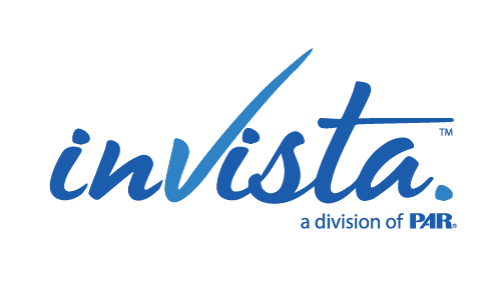Great leaders know it’s important to ensure they have open lines of communication with their employees. Top-down communication is critical to keep employees informed about key decisions, plans for the future, and status updates. But it’s only half the equation. In order to ensure your employees have the resources and support they need to be successful, you must have open and honest upward communication as well.
Even leaders who have very open dialogue with healthy feedback channels have suddenly found themselves struggling to understand what their people really think and need in light of our current pandemic. Many teams have been thrust into remote work arrangements. In other organizations, essential health care, call center, and retail employees are so overworked that manager check-ins and other communication channels have been forced to the bottom of the priority list.
This is the time to be intentional and direct about getting employee feedback.
Download our custom Employee Pulse Survey—and discover how your employees are handling the crisis.
What’s different now?
Employees are struggling right now in numerous ways, but what they need may not be as obvious as you think. In some cases, employees may have material needs for resources such as technology, equipment, and supplies. Or they may be struggling with insufficient organizational support to get their work done. And everyone is experiencing an elevated level of stress these days—but some of that may be due to factors that are within your power as the leader to change. It’s okay to ask your employees how they are doing—not from a productivity perspective, but as a human being who is living and working through unprecedented challenges. Just knowing that their leader cares about their personal well-being is sometimes enough to build the trust that allows an employee to speak up when they see an opportunity for improvement.
There are a number of ways to open the dialogue to understand what your employees need right now. One of the best ways is through weekly one-on-one meetings. Employees may not open up as much as they once did due to the awkward nature of virtual conversations, but scheduling these ensures that everyone has an opportunity to voice a concern or suggestion. However, in some situations, regular one-on-ones are simply not possible right now due to higher workloads and shortages of staff.
An easier approach: e-mailing a survey
Another approach is to ask for feedback via email, especially if your team is small enough that you can read and address every response. For larger organizations, you may consider polling your employees via a survey tool. Questionnaires with quantitative or scaled response options allow for aggregation and summary of large quantities of data. This can facilitate the process of understanding common themes in employee feedback around potential needs for enhanced communication, technology tools, or wellness resources. Online surveys also work well for teams that do not have a great deal of trust or openness already established in the culture, as online survey tools allow for anonymity, increasing the candor of responses. Just keep in mind that if you are going to call a survey anonymous, it is crucial that it actually is anonymous—otherwise, you risk losing credibility and putting future survey initiatives at risk for receiving sugar-coated responses. To understand the difference between anonymous and confidential surveys, take a look at this overview from Roanoke College.
If you’re still not convinced in the power of surveys, some additional benefits are outlined in this Harvard Business Review article from Facebook People Analytics leaders Scott Judd and Eric O’Rourke and renowned Wharton professor and author Adam Grant.
“During times like these, we have found it essential to have increased interaction with our teams and a more open dialogue. For us, this has included sending out a staff survey as a way of gaining insights into what our team needs,” says Kristin Greco, CEO of InVista Talent and PAR, Inc. “I have found that sometimes just the act of asking questions and listening reduces the stress levels of those in our organization. Since we have lost our ability to check in in the same way we used to—through in-person interactions and observations—it is even more important to see how our team members are doing, where they are struggling, and how we can support them.”
Closing the loop: what to do with the feedback
What’s more important than how or even whether you gather feedback is what you do with that information. There’s nothing worse than asking for employee feedback and then failing to acknowledge or address the results. After employees have taken the time and effort to give you their opinions, you have a duty to consider and respond to the findings. This does not mean you must implement every suggestion. But you should do the following three things:
- Thank employees for their participation. They are helping to shape improvement efforts using the power of their voices.
- Share what you heard and ask for clarification where needed. Employees want to see high-level results, so take a few minutes to help them understand what you learned in this process and make sure you understand the message.
- Prioritize the top two or three needs and take action. Don’t try to bite off more than you can chew by trying to solve 10 different problems at once. It’s better to make strong progress in a couple of areas than to try to do too much and make no meaningful progress at all.
If you need help prioritizing the areas to address first—ask! Find out what is most important to your employees. Involve them in the action planning process to ensure the improvement efforts are actually going to help.
I said there are three things you must do, but there is a fourth thing you really ought to do if you want to keep up the momentum in creating a culture of open communication:
- Keep it going. Share updates on action plans, check progress periodically via additional pulse surveys, and remind employees you are making these changes as a result of their feedback. This will show employees you actually listen when you ask for their opinions and will use their input to make improvements.
How complex should this be?
Organizations that have some complexities, such as numerous employee concerns, high levels of turnover, or low trust and openness, may find value in partnering with an external provider. Some companies see response rates almost double after outsourcing their employee opinion survey to reinforce the confidentiality of the process. Additionally, organizations that struggle with developing effective action plans or getting traction on key initiatives may find that having an experienced consultant leads to achieving better results and outcomes such as enhanced productivity, retention, and engagement.
Questionnaires don’t need to be long to be effective. To help you get started on your employee feedback process, we’ve provided a free, easy-to-use, out-of-the-box Employee Pulse Survey you can use within your organization. Of course, creating your own online version may be an even better and more flexible choice. Free and low-cost options are listed on WebFX’s comparison guide.
What really matters: showing you are listening!
Over the countless employee surveys I have conducted in my career, one thing emerges as the top predictor of employee commitment and engagement: the belief that management will use the results to make meaningful changes. By showing you are listening and using survey results, you have the ability to raise morale, improve working conditions, enhance productivity, and reduce burnout.



Recent Comments